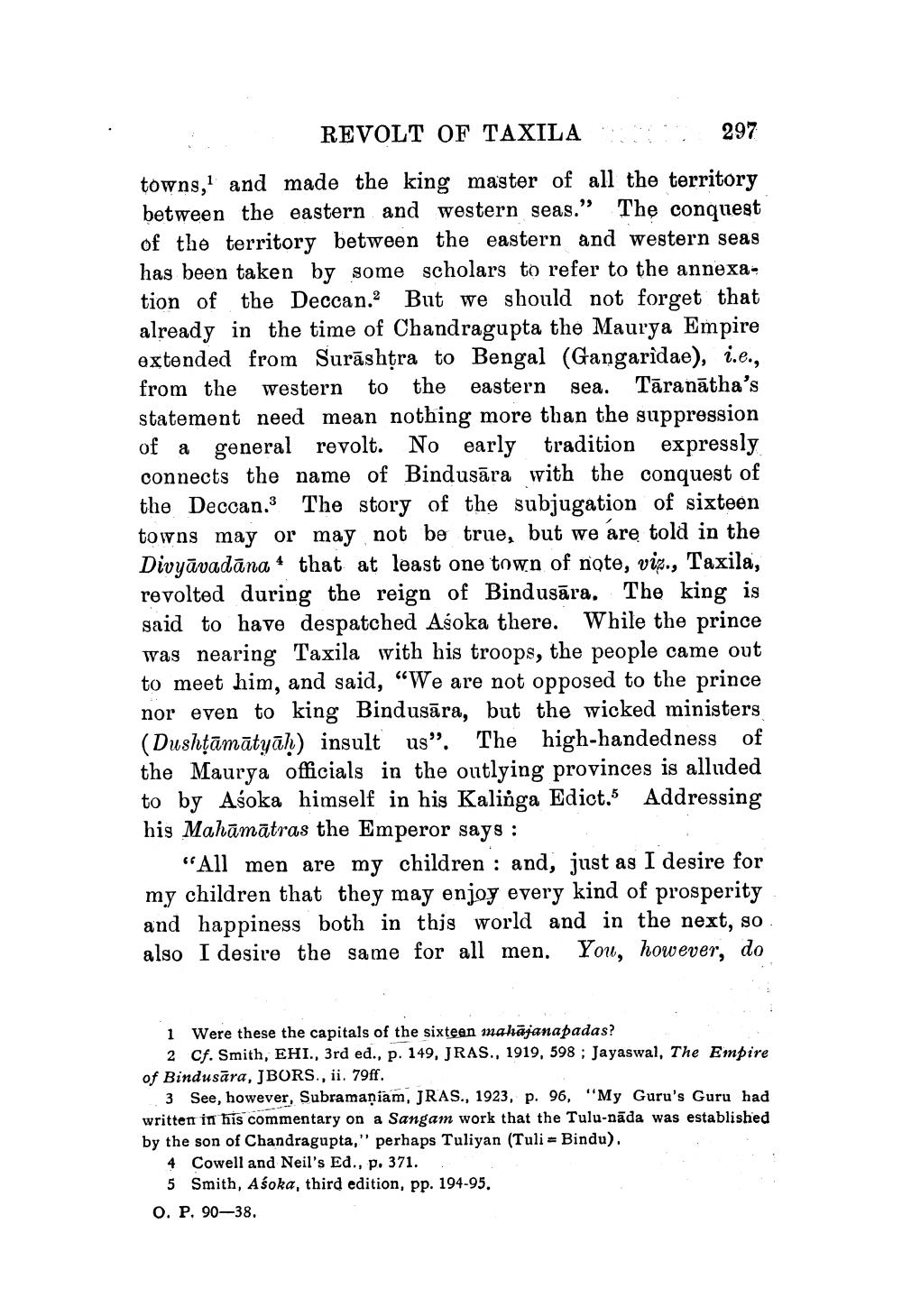________________
REVOLT OF TAXILA
297
towns, and made the king master of all the territory between the eastern and western seas." The conquest of the territory between the eastern and western seas has been taken by some scholars to refer to the annexa. tion of the Deccan. But we should not forget that already in the time of Chandragupta the Maurya Empire extended from Surāshtra to Bengal (Gangaridae), i.e., from the western to the eastern sea. Tāranātha's statement need mean nothing more than the suppression of a general revolt. No early tradition expressly connects the name of Bindusāra with the conquest of the Deccan. The story of the subjugation of sixteen towns may or may not be true, but we are told in the Divyāvadāna * that at least one town of note, viz., Taxila, revolted during the reign of Bindusāra. The king is said to have despatched Asoka there. While the prince was nearing Taxila with his troops, the people came out to meet him, and said, “We are not opposed to the prince nor even to king Bindusāra, but the wicked ministers (Dushțāmātyah) insult us". The high-handedness of the Maurya officials in the outlying provinces is alluded to by Aśoka himself in his Kalinga Edict. Addressing his Mahāmātras the Emperor says :
"All men are my children : and, just as I desire for my children that they may enjoy every kind of prosperity and happiness both in this world and in the next, so also I desire the same for all men. You, however, do
1 Were these the capitals of the sixteen mahājanapadas?
2 Cf. Smith, EHI., 3rd ed., p. 149, JRAS., 1919, 598 ; Jayaswal, The Empire of Bindusāra, JBORS., ii. 79ff.
3 See, however, Subramaniam, JRAS., 1923, p. 96, "My Guru's Guru had written in his commentary on a Sangam work that the Tulu-nāda was established by the son of Chandragupta," perhaps Tuliyan (Tuli = Bindu).
4 Cowell and Neil's Ed., p. 371. 5 Smith, Asoka, third edition, pp. 194-95. 0. P. 90—38.




